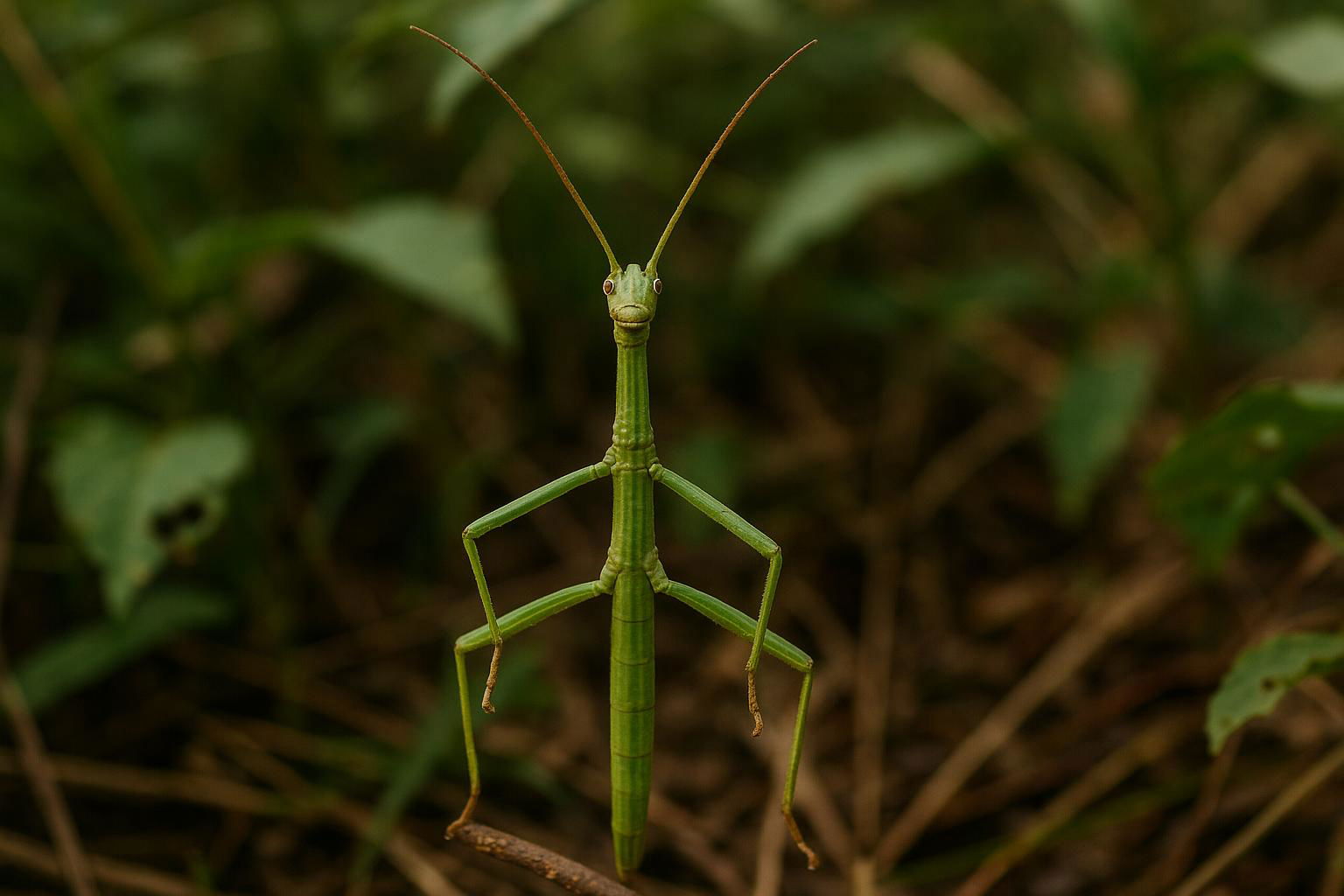
Indian Stick Insect
Carausius morosus
The Indian Stick Insect, scientifically known as Carausius morosus, is a fascinating species renowned for its remarkable camouflage abilities. Native to the tropical forests of southern India, this insect expertly mimics the appearance of a twig or stick, which provides it with a formidable defense mechanism against predators. Typically measuring between 8 to 10 centimeters in length, its elongated, slender body is colored in varying shades of brown and green, enhancing its likeness to its natural surroundings.
Carausius morosus primarily feeds on leaves, showing a particular preference for plants like ivy and privet. Despite their delicate and fragile appearance, Indian Stick Insects are surprisingly resilient and adapt well to various environments, making them a popular choice for insect enthusiasts in non-native regions. These insects are mostly nocturnal, relying on their cryptic appearance during the day to remain unseen.
Reproduction in Carausius morosus often occurs through parthenogenesis, where females produce offspring without the need for fertilization by males. This process results in a predominantly female population, with males being a rare occurrence. The Indian Stick Insect is a captivating example of nature’s ingenuity, showcasing incredible adaptability and survival strategies that continue to intrigue biologists and hobbyists alike.

 All Species & Breeds
All Species & Breeds
 Highland Cattle
Highland Cattle
 Miniature Donkeys
Miniature Donkeys
 All Species Directory
All Species Directory
 Highland Cattle in Virginia
Highland Cattle in Virginia
 Miniature Donkeys in Texas
Miniature Donkeys in Texas












